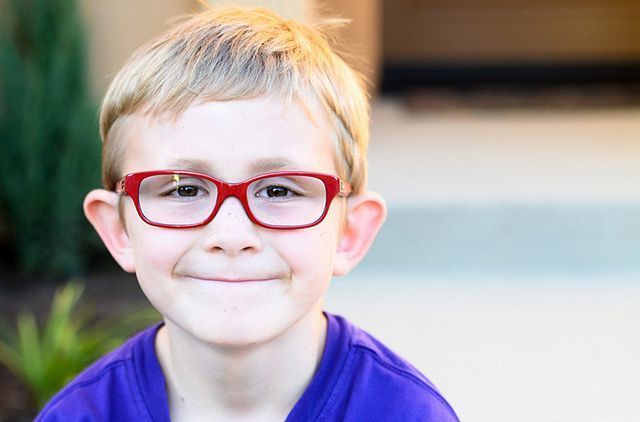Include regular eye exams as a part of childrens primary care routine to ensure a positive school experience
Making sure that a child is well-educated is one of the most important jobs a parent has. Education in children and young adults is about more than studying and getting good grades. Its a way to discover new things and increase their knowledge of the world around them. Education enables them to differentiate between right and wrong, good and evil. It opens their minds to people from all walks of life and economic situations, and gives them a better understanding of how others the world over live and think.
To ensure that children have a successful school experience, vision care is of the utmost importance. It has been proven that a childs eyesight has an immense impact on his or her ability to learn. According to the American Optometric Association, nearly 25 percent of school-age children have vision problems, as well as many preschool children. Only about one-third of all children have had an eye exam or vision screening prior to entering school.
Dr. Holly Conway, an optometrist with Family Eye Associates in Millersburg, noted that children should have their vision tested between the ages of 2 and 3 and again before entering kindergarten. Learning is visual, said Conway. Kids dont complain, and you cant always rely on a child to report a problem. Parents may not recognize symptoms, and there are not always symptoms.
Once children start school, Conway said, they should be tested yearly up to the age of 18. Vision changes can happen within six months, although it is usually a more gradual process. If a child begins to run into things, or one eye begins to turn, those problems should be checked immediately.
Other signs parents can watch for, Conway said, include sitting too close to the TV, avoiding homework, or a short attention span when reading or working on the computer. Children often have trouble reading, squint, rub their eyes, or complain of headaches.
It has been estimated that as much as 80 percent of the learning a child does is through his or her eyes. For example, even in first grade (and sometimes kindergarten), children are reading, writing and using computers. A childs eyes are constantly in use in school and during play. If there is a vision problem, schoolwork may suffer and participation in sports may be a chore rather than a pleasure. As children get older, good vision plays an even more important part in their education, as the time spent reading and studying increases dramatically.
Poor vision can cause a child to fall behind very quickly, said Conway. It is critical to make sure their vision is tested.
Although vision screening is usually done each year in school, Conway said, Parents should not think screening is a substitute for an eye exam, but should consider it more of a supplement. Im glad they do it, as it catches problems with far vision and other problems. But screening tests dont detect eye diseases or check on the health of the eye.
Parents also need to realize that even if a child has 20/20 vision, other problems may exist. The American Optometric Association has stated that vision is more than just the ability to see clearly. It is also the ability to understand and respond to what is seen. Basic visual skills include the ability to focus the eyes, use both eyes together as a team, and move them effectively. Other visual perceptual skills include recognition, comprehension, and retention.
Parents and teachers need to be alert for symptoms that may indicate a child has a vision problem. A childs success in school will depend on their ability to see clearly.

